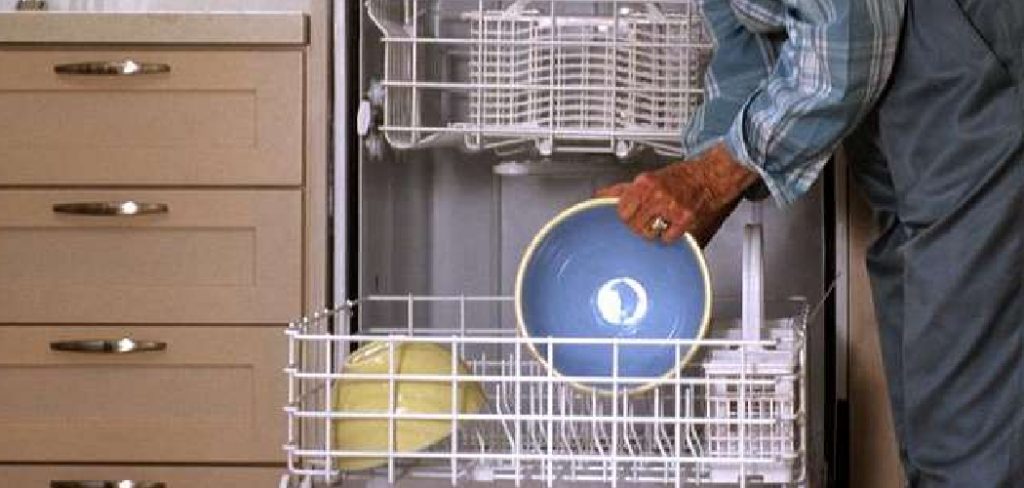A dishwasher is an essential appliance in many households, making daily cleaning chores more manageable. However, without proper maintenance, it can become a breeding ground for mold, which thrives in the moist and warm environment. Mold not only affects the performance of your dishwasher but can also pose health risks. This guide explores the key aspects of how to prevent mold in dishwasher. Preventing mold growth requires regular care and attention, ensuring your appliance remains clean and safe for everyday use.

Why Mold Grows in Dishwashers
Mold thrives in environments that are warm, moist, and rich in organic matter, making dishwashers an ideal place for growth. During each cycle, leftover food particles, grease, and soap scum can accumulate in filters, seals, and other hidden areas of the appliance. When combined with the high humidity from repeated usage and inadequate ventilation, these residues create the perfect conditions for mold to flourish. Additionally, if the dishwasher is not regularly cleaned or left closed for long periods without proper drying, moisture becomes trapped, further encouraging mold development. Understanding these factors is key to taking proactive measures against mold growth.
Essential Tools and Cleaning Supplies
To effectively prevent and remove mold in your dishwasher, you’ll need the right tools and cleaning supplies. Here’s a list of essentials to keep your appliance clean and mold-free:
- White Vinegar: A natural disinfectant that helps break down grease, soap scum, and mold.
- Baking Soda: Useful for deodorizing and scrubbing away stubborn residues.
- Soft Bristle Brush: Ideal for cleaning small crevices, seals, and filters.
- Microfiber Cloth: Perfect for wiping surfaces and drying the interior of the dishwasher.
- Dishwasher-Safe Cleaner: A commercial cleaner designed specifically to combat mold and grime.
- Rubber Gloves: To protect your hands while handling cleaning agents and scrubbing hard-to-reach areas.
- Toothbrush: Helpful for cleaning around smaller components like spray arms and hinges.
Having these tools and supplies on hand will make the cleaning process more efficient and ensure your dishwasher stays hygienic and in optimal condition.
10 Methods How to Prevent Mold in Dishwasher
1. Regularly Clean the Dishwasher’s Filter
Dishwashers are equipped with filters that trap food debris, grease, and other particles. Over time, these filters can become clogged and provide an ideal breeding ground for mold and bacteria. To prevent this, clean the dishwasher filter regularly—at least once a month. Remove the filter, rinse it under warm water, and scrub it gently with a brush to dislodge any trapped particles. This will help keep the dishwasher’s interior dry and free from organic matter that could encourage mold growth.

2. Leave the Dishwasher Door Ajar Between Cycles
After each wash cycle, leave the dishwasher door slightly ajar to allow moisture to escape. A closed door traps humidity inside, creating the perfect environment for mold and mildew to develop. By leaving the door open for an hour or two after the cycle, you allow the interior to dry completely. This simple step helps reduce the chance of mold growth and ensures your dishwasher remains fresh. Additionally, it helps dry out the rubber seals and gaskets, which can also harbor mold if left damp.
3. Use a Dishwasher Cleaner or Vinegar
Running a dishwasher cleaner or a natural cleaning agent like white vinegar through a cycle can help disinfect and prevent mold. Vinegar’s natural acidity breaks down soap scum, mineral deposits, and food residue that could encourage mold. To use vinegar, place a cup of vinegar on the top rack of the empty dishwasher and run a hot water cycle. You can also use commercial dishwasher cleaning tablets that are designed to remove buildup and kill bacteria and mold. Regularly cleaning your dishwasher with vinegar or cleaner once a month will help maintain a mold-free environment.
4. Dry Off the Rubber Seals and Gaskets
The rubber seals and gaskets around the door of the dishwasher are often moist after each cycle, which makes them prone to mold and mildew growth. To prevent mold from forming on these parts, wipe them down with a clean, dry cloth after every use. Pay special attention to the edges and crevices where water can accumulate. For a deeper clean, you can occasionally scrub the seals with a mixture of baking soda and water to eliminate any buildup or residue. Keeping these areas dry and clean will significantly reduce the chances of mold growth.

5. Inspect and Clean the Spray Arms
The spray arms inside your dishwasher can become clogged with food particles, grease, or mineral deposits, which can contribute to mold formation. To prevent this, regularly inspect the spray arms for blockages and clean them if necessary. Detach the spray arms from the dishwasher and rinse them under warm water. Use a toothpick or small brush to clear any debris from the spray nozzles. Cleaning the spray arms ensures that water is properly distributed during the wash cycle and reduces the chance of mold buildup from stagnant water.
6. Use the Right Detergent and Avoid Overloading
Using the wrong detergent or overloading the dishwasher can result in poor cleaning performance and leftover residue, which can promote mold growth. Always use high-quality, recommended dishwasher detergent and avoid overloading the dishwasher, as this can block water flow and prevent proper rinsing. If detergent residue is left behind, it can contribute to mold growth. Additionally, make sure to choose a detergent that is designed to prevent hard water buildup, which can also encourage mold and mildew.
7. Run Hot Water Cycles Regularly
Mold thrives in cool, damp environments, so it’s important to run hot water cycles regularly to ensure your dishwasher stays sanitized. During these cycles, the higher temperature helps break down grease, food residue, and soap scum, reducing the potential for mold growth. If your dishwasher has a sanitize cycle, use it once a month to ensure that the interior is disinfected. If not, simply running a hot cycle with vinegar or a specialized cleaner can help kill mold spores and bacteria.

8. Keep the Drainage Area Clean
Clogged or slow-draining dishwashers are a breeding ground for mold because standing water provides a perfect habitat for mold and mildew. Check the drain area at the bottom of the dishwasher regularly to ensure that it’s not clogged with food particles or debris. If necessary, clean the drain and remove any obstructions. You can also check the dishwasher’s hose for any kinks or blockages that might be causing poor drainage. Ensuring that water drains efficiently after every wash cycle will help keep the interior dry and mold-free.
9. Maintain Proper Ventilation
Proper ventilation is key to preventing moisture buildup inside your dishwasher, which can lead to mold growth. Ventilate the kitchen area by using exhaust fans or opening windows when the dishwasher is running. If your dishwasher has a venting system, make sure it’s not blocked and that it’s functioning properly. Additionally, make sure the kitchen is adequately ventilated to allow the moisture from the dishwasher to dissipate more effectively. Good airflow in and around the dishwasher helps dry it out and prevents mold from taking hold.
10. Use a Dehumidifier in High-Humidity Areas
If you live in a humid environment, excess moisture in the air can increase the likelihood of mold growth in your dishwasher. Using a dehumidifier in the kitchen or nearby area can help reduce humidity and keep the air dry. By lowering the moisture levels in the surrounding environment, you make it harder for mold to thrive inside the dishwasher. A dehumidifier is especially useful in basements or poorly ventilated kitchens, where humidity tends to accumulate.
Things to Consider When Preventing Mold in Your Dishwasher
Frequency of Cleaning
Regular maintenance and cleaning are crucial to keeping your dishwasher mold-free. Develop a habit of inspecting and cleaning the interior components, such as the filter, spray arms, and gaskets, at least once a month to prevent buildup.
Type of Water Used
Hard water can leave mineral deposits that create an ideal environment for mold to grow. If you live in an area with hard water, consider using water softeners or a detergent designed to combat mineral buildup.
Dishwasher Usage
The frequency of use can influence mold presence. Dishwashers that are rarely used tend to retain stagnant water and moisture. To avoid this, run an empty hot water cycle periodically if you’re not using the dishwasher regularly.

Sealing and Installation
Ensure that your dishwasher’s seals are tight and that it is installed correctly to prevent leaks or damp areas around the exterior. Address any leaks immediately to avoid moisture accumulation, which could lead to mold growth.
Kitchen Environment
The overall humidity and ventilation in your kitchen can impact the moisture levels inside your dishwasher. Pay attention to the climate and take extra ventilation or dehumidifying measures in high-humidity environments.
Conclusion
Preventing mold in your dishwasher is an ongoing process that involves regular cleaning, maintenance, and proper drying techniques. By cleaning the filter, leaving the door ajar, and using vinegar or dishwasher cleaner periodically, you can keep mold at bay. Paying attention to key areas like the rubber seals, spray arms, and drainage system will further prevent moisture buildup and ensure a mold-free dishwasher. Thanks for reading, and we hope this has given you some inspiration on how to prevent mold in dishwasher!
Professional Focus
Angela Ervin, a former interior designer turned blogger, specializes in kitchen design and renovations. Through her website, she blends her passion for cooking with design expertise, sharing practical and creative ideas. Known for balancing functionality and beauty, Angela’s insightful content has made her a trusted voice in home design and lifestyle.
About the Author
Angela Ervin, an experienced interior designer and blogger, combines her passion for kitchen renovations with storytelling. Living in Petersburg with her family, she enjoys cooking and testing her projects firsthand. Known for her humor and relatable style, Angela shares creative, functional design insights through her content, making her a trusted voice in home design.
Education History
University: Virginia Commonwealth University
Degree: Bachelor of Fine Arts (BFA) in Interior Design
- Angela’s education at VCU focused on mastering core interior design principles, including spatial planning, color theory, materials selection, and sustainable design practices.
- She gained hands-on experience through studio projects and collaborative design exercises, which honed her ability to create functional and aesthetically pleasing environments.
- Her coursework also emphasized problem-solving and practical applications of design, preparing her for real-world projects like her self-directed kitchen renovations.
- The program’s strong foundation in both technical skills and creative expression shaped Angela’s ability to seamlessly integrate form and function in her work.
